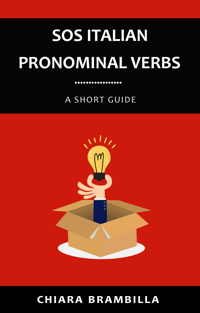
If you’re learning Italian as a second language, you’ve probably heard about language exchanges and tandem partnerships as a way to practice speaking. But are they really useful? The answer is a resounding yes! Language exchanges offer an incredible opportunity to improve your Italian in a real-world setting, giving you a chance to speak with native speakers while helping them with your own language.
In this post, I’ll explore why language exchanges and tandem partnerships are so beneficial, how to get the most out of them, and offer practical examples of how these experiences can boost your Italian learning journey.
What Are Language Exchanges and Tandem Partnerships?
A language exchange or tandem partnership is when two people who are learning each other’s native languages meet up (either in person or online) to practice. For example, if you’re an English speaker learning Italian, you could pair up with an Italian speaker learning English. During your sessions, you would spend part of the time speaking in Italian (so you can practice), and part of the time speaking in English (so your partner can practice).
Platforms like Tandem, HelloTalk, and Speaky make it relatively easy to find language exchange partners from around the world, including native Italian speakers who are eager to help you improve your language skills while learning from you as well.
Real-World Communication Practice
One of the most powerful benefits of language exchanges is the ability to engage in real-world communication. Textbooks and language apps are great for learning vocabulary and grammar, but they don’t prepare you for actual conversations. Speaking with native Italians in a language exchange gives you a chance to:
- Practice listening and speaking in a natural setting.
- Learn how to handle real-time conversations, including quick responses, questions, and everyday phrases.
- Improve pronunciation and intonation by mimicking native speakers.
Build Cultural Understanding
Language exchanges go beyond grammar and vocabulary—they expose you to the culture of the language. When speaking with a native Italian speaker, you’ll learn about colloquial expressions, idioms, and cultural nuances that you wouldn’t get from traditional learning methods.
For example, in Italy, people might say:
- “In bocca al lupo!” – Good luck! (Literally: In the wolf’s mouth!)
The proper response to this is:
- “Crepi!” – May the wolf die!
These expressions come naturally in conversation with native speakers. Understanding how Italians express themselves in daily life will improve your listening skills and make you sound more natural.
Immediate Feedback on Mistakes
One of the most significant advantages of language exchanges is that your partner can hopefully provide instant feedback on your mistakes. This is critical for improving your grammar, pronunciation, and sentence structure. Native speakers generally can point out common errors and help you correct them in real time.
Example:
You might say:
- “Ho visitato museo ieri.” – I visited a museum last night.
Your partner might correct you, explaining that you need “un” (an article) before the word museum. So you should say:
- “Ho visitato un museo ieri.” – I visited a museum yesterday afternoon.
Receiving this kind of immediate correction allows you to internalize the right phrasing and avoid making the same mistake in the future.
Be careful, though, because sometimes native speakers believe certain expressions are 100% correct and part of standard Italian, when in fact they are part of their regional dialect. Another thing to keep in mind is that, in general, those without a specific linguistic background, may not be able to explain why a particular tense or structure is used. In short, they might only help correct mistakes (hopefully), but not help you understand the grammar.
Boost Confidence in Speaking Italian
Many language learners feel nervous about speaking a foreign language, especially with native speakers. Language exchanges provide a low-pressure environment where both you and your partner are learning, making it easier to gain confidence. Over time, the more you practice, the more comfortable and fluent you’ll become.
Example:
Your partner might ask:
- “Cosa ordineresti in un ristorante o in una pizzeria italiana?” – What would you order in an Italian restaurant or pizzeria?
You could respond:
- “Ordinerei una pizza margherita, è la mia preferita!” – I would order a margherita pizza, it’s my favourite!
By practicing everyday situations, you’ll gain confidence in your ability to handle real-life interactions.
During a language exchange, it’s normal to make mistakes—that’s part of the learning process! Your partner will be understanding because they’re in the same position when practicing your native language. This supportive environment helps build the confidence needed to speak Italian in other settings, such as when traveling or conversing with locals.
Structured Language Exchange Sessions
To get the most out of a language exchange or tandem partnership, it’s important to have a structured approach. Here’s a simple plan for a productive session:
- Divide your time equally: Spend half the time speaking Italian, and half the time speaking your native language. This ensures both you and your partner benefit.
- Prepare a list of topics: Before the exchange, decide on themes or scenarios you want to practice, such as hobbies, travel, or daily routines. This will keep the conversation focused.
- Ask for corrections: Encourage your partner to correct you when you make mistakes, especially with pronunciation or grammar. Likewise, offer feedback to your partner when they’re practicing your language.
Example of a structured session:
- 10 minutes: Introduce yourselves in Italian and talk about your daily routine.
- “Mi sveglio alle sette e faccio colazione.” – I wake up at seven and have breakfast.
- 10 minutes: Switch to your partner’s language, allowing them to practice.
- 10 minutes: Practice role-playing scenarios, like ordering food or asking for directions in Italian.
- “Scusi, dov’è la stazione?” – Excuse me, where is the station?
So, in short, yes, language exchanges and tandem partnerships are incredibly useful for learning Italian for free. They offer a chance to practice real-world conversations, receive immediate feedback, build confidence, and gain cultural insight. Whether you’re a beginner or an intermediate learner, incorporating regular language exchanges into your study routine can accelerate your progress and make learning Italian a more enjoyable and interactive experience.
So, why wait? Find a tandem partner today and take your Italian learning to the next level!
If you found this article useful, don’t forget to share it with the world and to like our Facebook Page!
Credits
Image by Copilot







